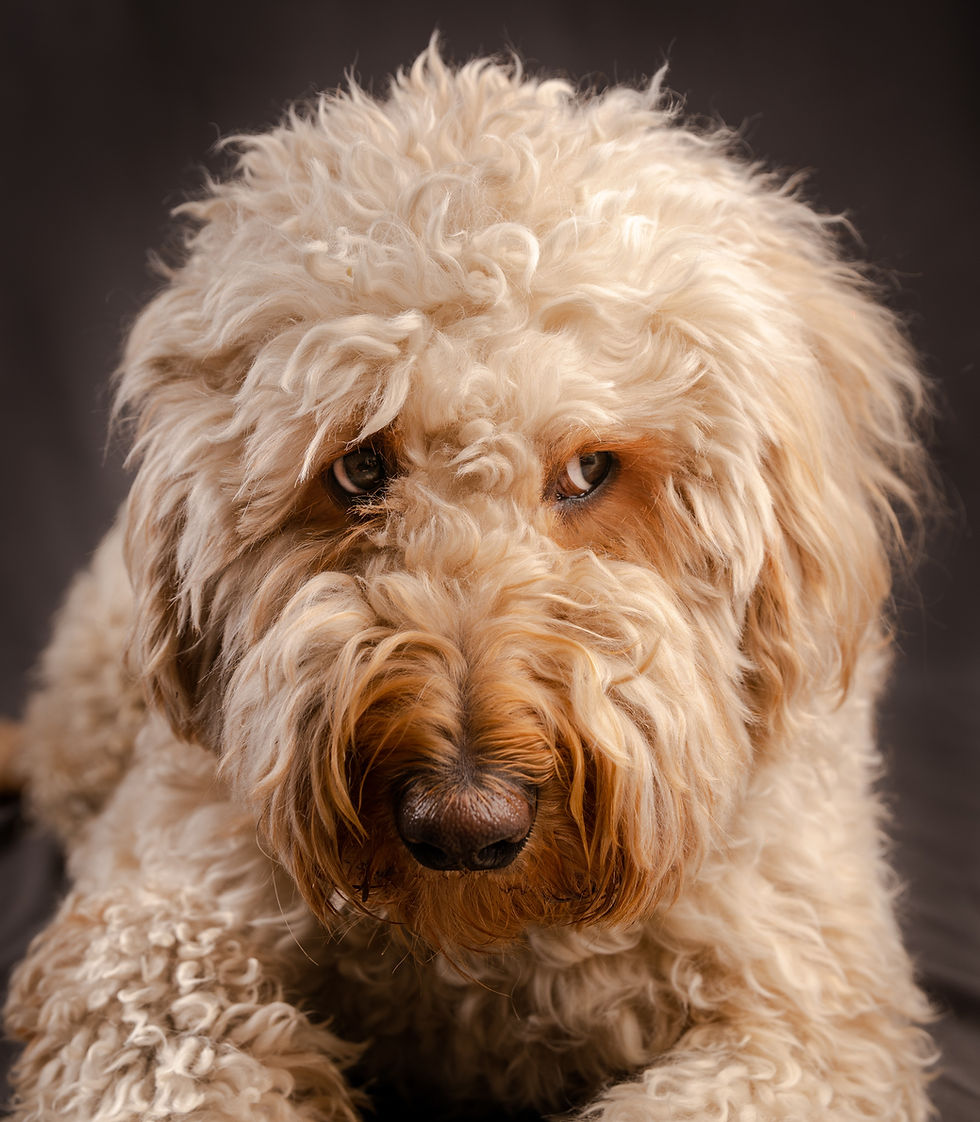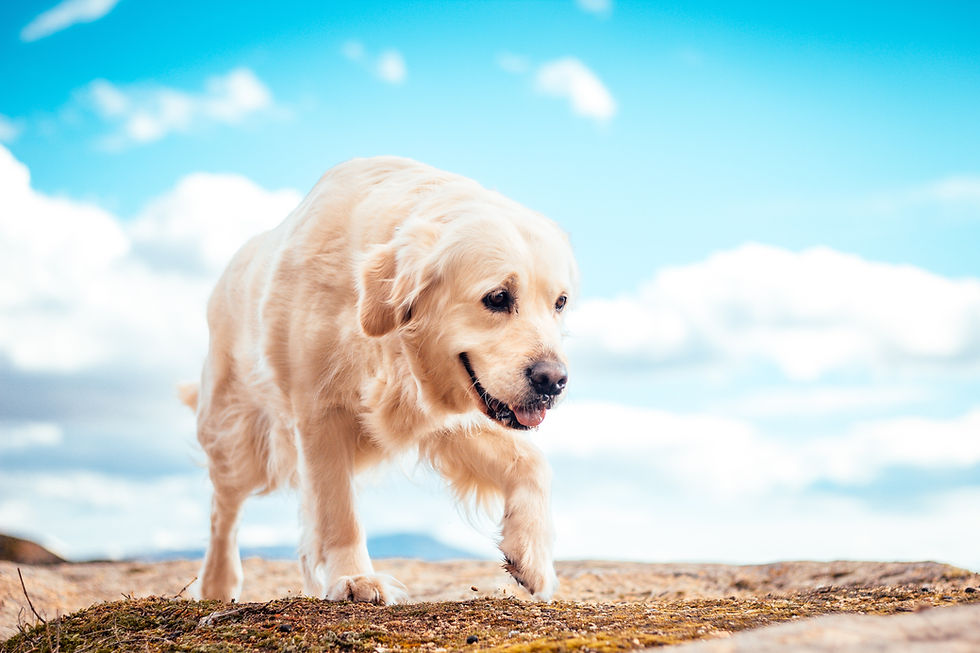
All relationships are based on communication, and the best relationships flourish through clear, direct communication that fosters understanding, cooperation and collaboration. Your dog, no matter what breed or mix of breeds, communicates mostly through his body language and facial expressions, and understanding how to interpret what he’s conveying to you is a powerful key to building and maintaining a beautiful lifelong relationship. Your dog strives to understand you; he watches you closely in order to decipher your feelings and responses. Yet some of his behaviours can easily be misinterpreted, especially when he’s doing his best to tell you that he feels uncomfortable or anxious.
Dog Facial Expressions
Your dog’s facial expressions tell you a lot about how he is feeling. When he’s happy his facial muscles will be relaxed, his eyes bright, his mouth loosely open, and often his tongue will be lolling. When he feels tense you’ll notice that his mouth is closed and his jaw tight, and his face shape will be drawn in due to muscle tension. His eyebrows may furrow when he feels sad or worried, in much the same way as ours do – with the inner area of the brows drawn upwards and closer together.

If your dog is uncomfortable he may display what is called “whale eye”, in which he looks sideways out of the corner of his eye so that the sclera, the white of the eye is visible. You’ll also see evidence of the sclera if he is angry, when his eyes widen as he glares at the object of his displeasure.

Dog Body Language
Observe what your dog’s silent signals are telling you to discover how he’s feeling.
What Does A Relaxed Dog Look Like?
Your dog will have soft eyes and no signs of tension in the face, ears and body. His movements will be fluid, and his tail will be fairly low. His mouth will be loose and open, and he may display a “doggy grin” with his tongue hanging out.

Confidence in Dogs
A confident dog is comfortable in his body. He holds himself upright yet relaxed, with his head up and a bright-eyed, alert expression. His tail may be raised slightly, and his ears may be pricked up if something has gained his interest, or relaxed and floppy if he’s just hanging out in your company or the company of other dogs.

Signs That A Dog Is Anxious
Your dog will hold his body low as if he’s trying to make himself look smaller. His ears will be tucked tightly against his head, his tail will be down, and if he’s scared it may be tucked between his legs. His head will be low and he’ll avert his gaze. His body will be carried so that more weight is on his hind legs. He may cringe or try to distance himself or hide, or he may use signals such as lying down, sniffing the ground, taking an interest in his genitals, or sniffing the ground to display that he’s not a threat.


Signs That A Dog Is Happy
Your dog will carry himself upright. His ears may be pricked and his eyes will be bright. He’s likely to seek eye contact and he may “grin”, with an open mouth and floppy tongue. His tail will be wagging, and he may bounce around joyfully – especially if he’s excited. His facial and body muscles will be loose and relaxed.

Signs That A Dog Is Depressed
We now know that dogs do suffer from depression, though this is more likely to be caused by ill health and specific events such as the loss of a family member or being rehomed. A depressed dog shows similar body language to an anxious dog. He may avoid eye contact and seek to be alone. His eyes will be dull and sad, with the inner eyebrows raised. His body and tail will be low, and he may lose interest in food and in things that he previously enjoyed, such as interaction and play.

Signs That A Dog Is Angry or Aggressive
If your dog is feeling angry or challenged, he will hold himself rigidly upright in order to appear taller. His face and body will be tense, and his mouth is likely to be tightly closed unless he is further provoked to curl back his lips to display his teeth. His eyes will grow rounder and protrude, with the whites of the eyes visible, and his ears may be pinned back. His tail will be held out high and may wag slowly and jerkily. Whereas an anxious dog leans back slightly so that his weight is on his hind legs, an angry dog will lean forward so that his weight is on his forelegs. His hackles may rise along the neck and back.


Note: Studies have found that small children perceive a dog showing his teeth as smiling rather than as a sign of threat.
Additional signals
Dogs use their bodies to communicate with us and each other in other ways, too, including during play and when taking steps to resolve conflict.
The Five Fs
If your dog is faced with what he perceives as threat he will respond in one of five ways – we call this The Five Fs. These are freeze, flight, fight, flirt or fool around, or flock. He may stop and stay very still (freeze). He may try to run away (flight). He may attack (fight). He may act silly and bounce around (flirt or fool around), or he may run to you or whoever he perceives as his protector (flock). If his chosen default behaviour doesn’t work he may then be forced to try an alternative, such as fighting if freezing, fooling around or flocking to you doesn’t deter the threat.
Dogs And Play
When your dog wants to invite another dog (or you!) to play, he may perform a play bow. This involves stretching his forelegs low in front of him, bowing his head, sticking his butt up in the air and wagging his tail. Dogs will also do this to signal that they’re ready for another round of fun and games if play has been broken off because it’s become a little too rough for one party, or as an apology from the rougher dog to his companion.
Holding what looks like a play bow in position for a prolonged period is not a signal to commence play. Dogs will bow to ask for distance if they feel a little uncomfortable during an interaction.

All of these dogs are having fun with safe and enjoyable play.



If a game appears to be getting out of hand (or paw) within a group of dogs, often an onlooker dog will intervene by mediating and splitting up a pair of dogs to ensure rough play doesn’t escalate into conflict. The mediator dog will step in between the unruly dogs and wait for both sides to calm down before stepping away.

Observing Dog Body Language
Watching our dogs is endlessly fascinating and we can learn so much through observing their subtle communications. Dogs move fast, especially during play, so you can decipher even more if you use a camera phone to video them. So much can be missed by the naked eye that it can be revelatory to watch the recordings when you play those back.
Getting to know and understand your dog’s silent communication will enable you to understand him more profoundly, and to become more aware of how he responds to the signals you are giving out, too.
Fascinating isn't it. If you want to learn more about your dog consider joining our dog's BFF short course. It's less than a tenner and your dog will thank you for better understanding them!
I had no idea how critical the right injection site is for tirzepatide until I found this guide. It not only helped me understand which spots are best but also why it’s essential to alternate sites to avoid any issues like irritation or swelling. I’ve been following its advice, and I’ve had a much smoother experience since. If you need clarity on injection techniques, check it out: https://valhallavitality.com/blog/understanding-injection-sites-for-tirzepatide-a-comprehensive-guide. It was a game changer for me.